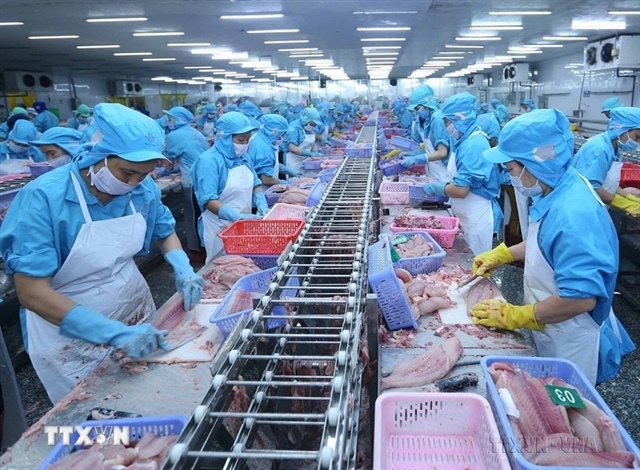Energy security at risk after forced plant output cuts
Energy security at risk after forced plant output cuts

Energy security at risk after forced plant output cuts
|
Put into operation in late 2019, Sinenergy Ninh Thuan 1 Solar Power Plant from Singapore’s Sinenergy Holdings Pte., Ltd. has had to cut the capacity by 20 per cent over recent months, especially during the peak hours of 10am-2pm, due to the overloading of the power transmission lines and transformer stations.
Plant manager To Van Viet told VIR that cutting power outputs has caused millions of US dollars in loss every year. Located over 60 hectares in the south-central province of Ninh Thuan’s Ninh Phuoc district and costing $57 million of investment, the 50MW solar power plant is estimated to gain around $7.4 million annually at full capacity. “Cutting power generation capacity could delay return on investment, as well as push some investors into much more difficulties if borrowing money from banks,” Viet said.
It is a common situation for renewable energy farms not only in Ninh Thuan, but also across the nation. At a meeting last week, director of Electricity of Vietnam’s (EVN) National Load Dispatch Centre Nguyen Duc Ninh confirmed that the capacity of renewable power plants like Sinenergy Ninh Thuan 1, which are connecting to the national grid, “will be cut down continuously”.
He explained that due to the pandemic over the past year, electricity consumption fell by about 15 billion kWh, equivalent to 7-8 per cent, while numerous solar power projects have been put into commercial operation.
“Installed solar power is about 17,000MW now, making up 30 per cent of total capacity, and often increases to 40-60 per cent of the total at noon. This has put a lot of pressure on the national power transmission system,” Ninh said. “In the first four months of 2021, about 470 million kWh of renewable energy has been cut down, and around 1.7 billion kWh of renewable energy (including wind and solar power) could be done so in the whole year.”
Dao Du Duong, director of Bao Long Solar Energy, said that last year’s issuance of Resolution No.55-NQ/TW on related policies have facilitated a lot for renewable energy businesses. However, overheated development of renewable energy – both solar and wind power – has caused challenges for both the business community and local authorities.
Specifically, Duong said, shrinking output capacity has caused both difficulties and losses for renewable energy businesses. Additionally, state-owned banks tend to stop providing loans for investment into renewable energy, while commercial banks have less attractive interest rates and offered less support for businesses.
“The market is developing too fast and the feed-in tariffs (FiT) are being adjusted significantly year by year, so the performance and profitability of the projects are reducing, while businesses have to suffer higher interest rates,” said Duong.
Despite difficulties in connecting with the national power grid, some generators are still boosting cooperation with partners via mergers and acquisitions. For instance, two weeks ago one of the biggest players in renewable energy Trung Nam Group announced the successful sale of 49 per cent in the 204MW Trung Nam Thuan Bac solar power plant in Ninh Thuan to A Chau Industrial Technology JSC (ACIT).
After the deal, Trung Nam Group has handed over the general director position to Nguyen Dang Khoa, deputy general director of ACIT. The plant, with the total investment of over $217 million and annual capacity at 450 million kWh, is applied the FiT at 9.35 cent/kWh within 20 years. However, the plant has slashed capacity remarkably since last year. At the end of January more than a half of its capacity was shrunk by 118MW of a total of 204MW.
Previously, through the form of joint ventures and share transferring, foreign corporations have owned numerous solar and wind power projects in the country. For example, the two solar power plants TTC1 and TTC2 in the south-western province of Tay Ninh developed by Thanh Thanh Cong Group in collaboration with Thailand-based Gulf Energy Development Public Co., Ltd. has been in operation since mid-2019. However, one year later local ownership almost disappeared, while the share of the Thai investor rising sharply to 90 per cent (from 49 per cent) for the two power plants.
Explaining the movement, director general of the Ministry of Industry and Trade’s Electricity and Renewable Energy Authority Hoang Tien Dung said that transferring/selling the whole or a part of renewable energy projects is normally in the market mechanism and in line with legal framework.
However, if the policies related to FiT and cutting down capacity are too tight, more projects will be stuck in difficulties and more big power projects will belong to foreign players. “As a result, energy security and other adjoining problems will be big concerns,” Dung warned.


























